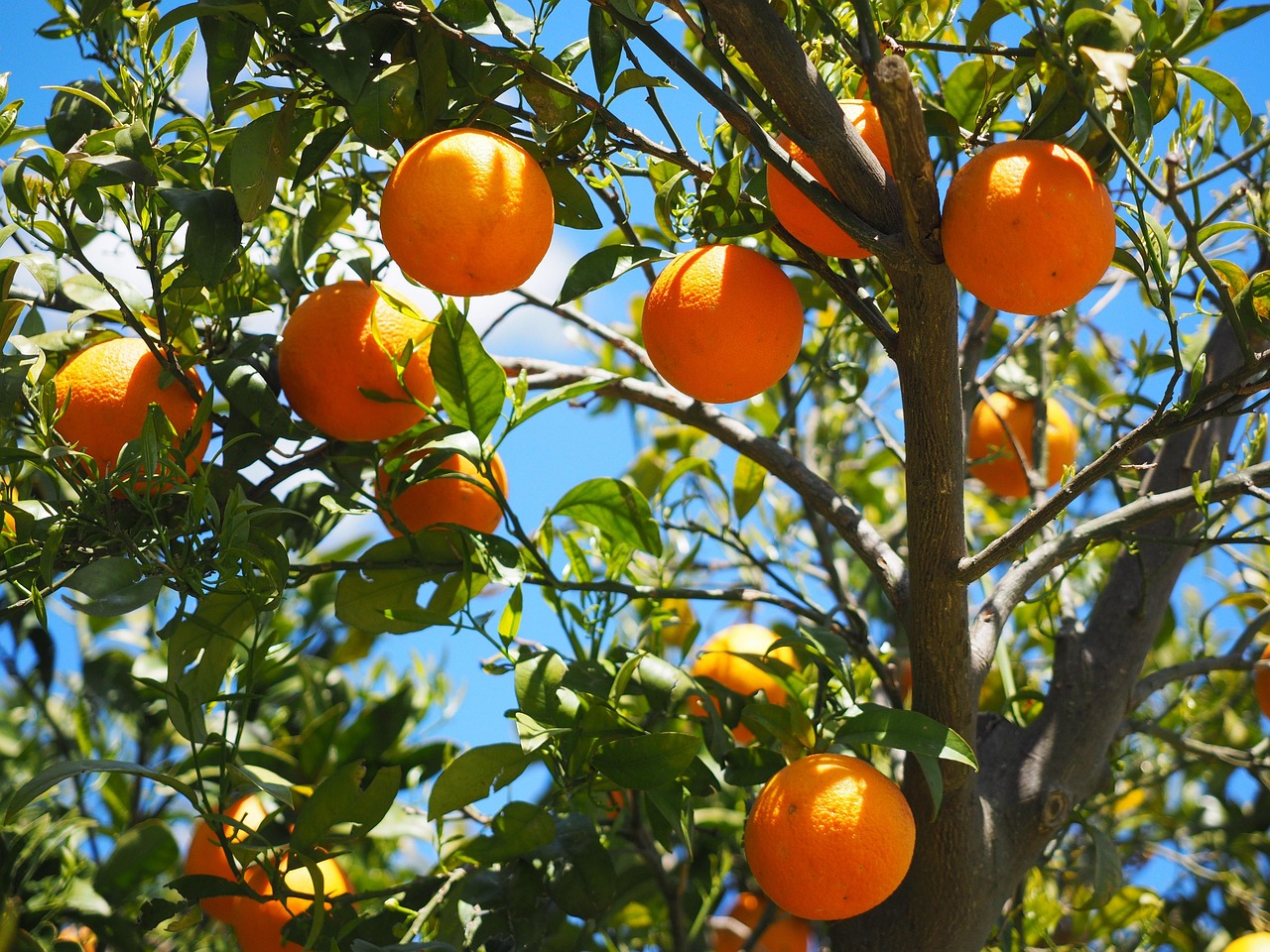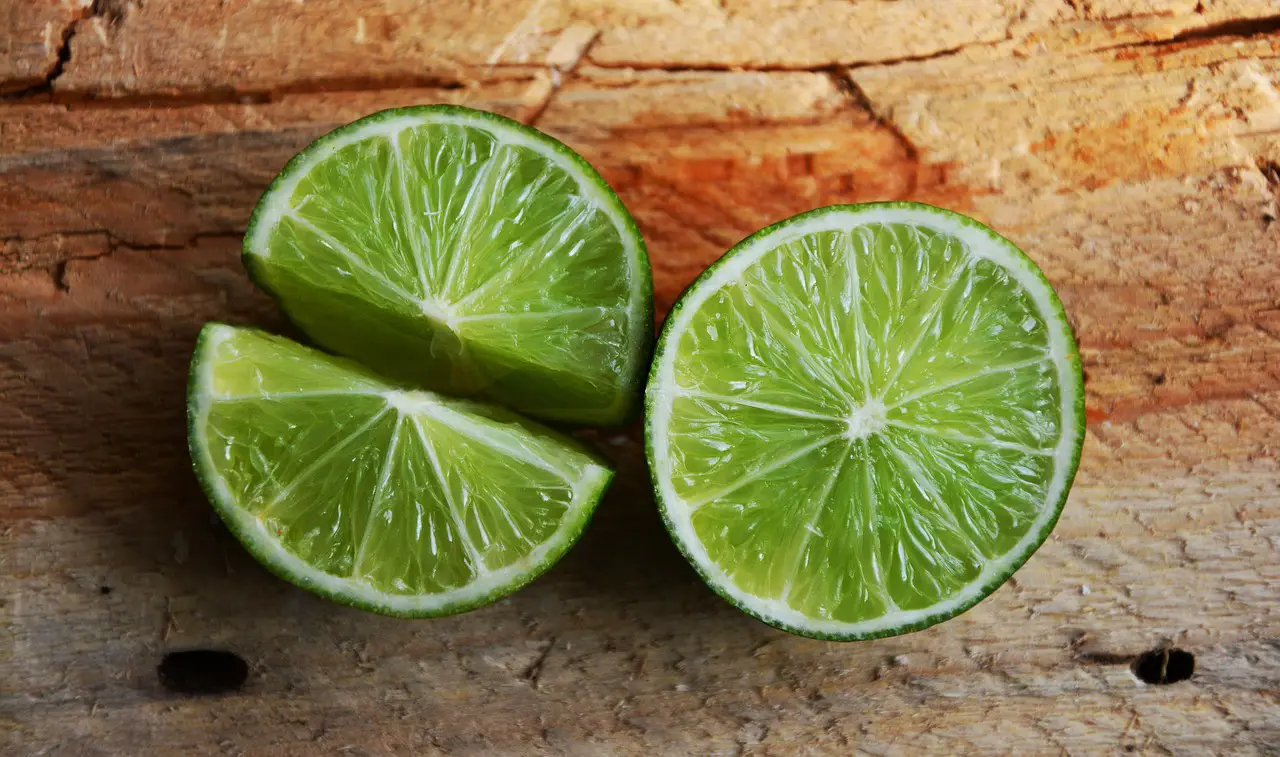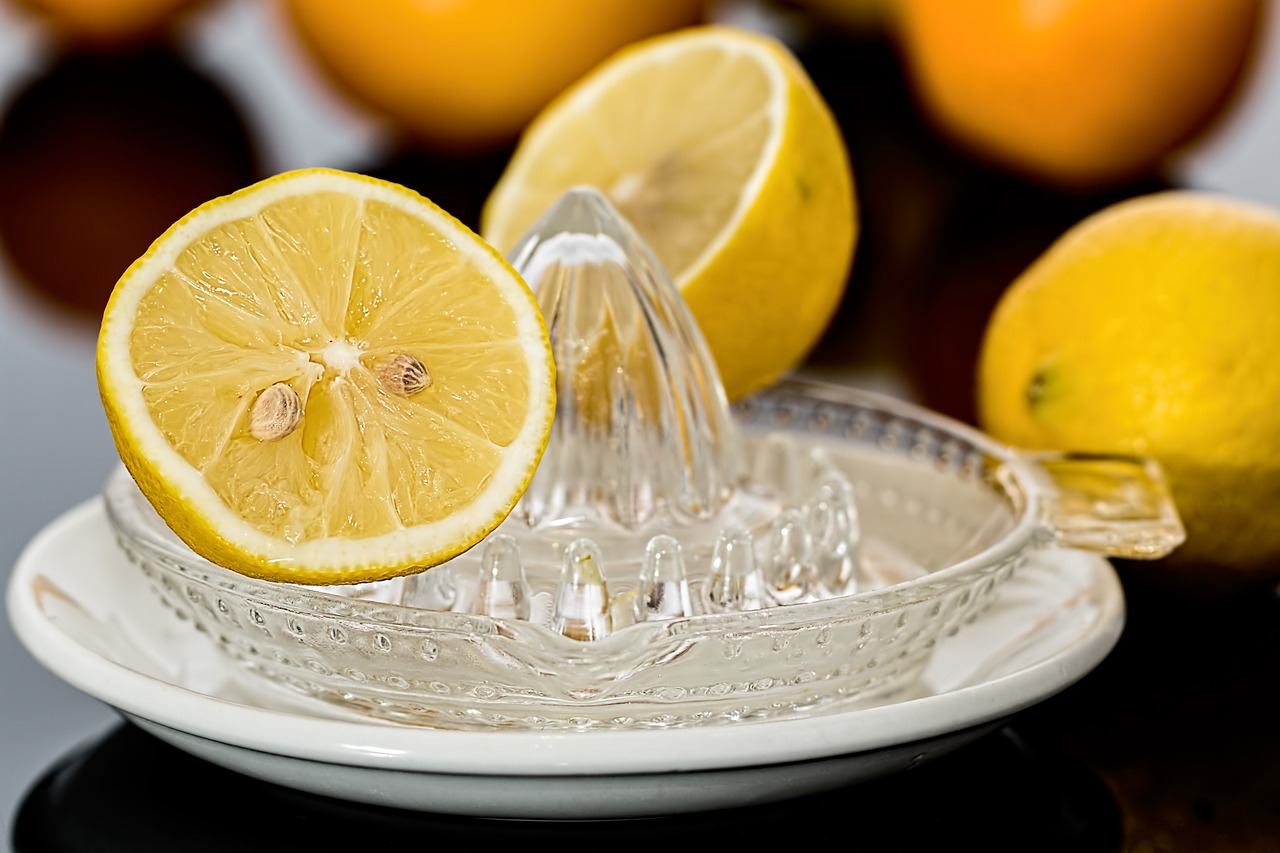Pruning citrus trees properly enhances their health and promotes better pollination. By removing excess branches and ensuring adequate airflow, you improve light penetration and create an environment conducive to attracting pollinators like bees, which are essential for fruit production.
Citrus trees are popular for their fragrant blossoms and tasty fruits. However, many gardeners overlook the importance of pruning in maintaining the health and productivity of these trees. Pruning is not just about shaping the tree; it plays a crucial role in encouraging growth, improving fruit quality, and enhancing pollination.

Understanding the best practices for pruning can significantly impact the overall health of your citrus trees. Healthy trees not only produce more fruit but also attract more pollinators. Pollinators, such as bees, are vital for the fertilization process. Without them, citrus trees may produce fewer fruits or none at all.
Why Prune Citrus Trees?
Pruning serves multiple purposes that contribute to the well-being of citrus trees:
- Improved Air Circulation: Pruning allows air to flow freely through the tree. This reduces humidity and helps prevent fungal diseases.
- Enhanced Light Exposure: Removing excess branches ensures that sunlight reaches all parts of the tree, promoting better growth and flowering.
- Increased Yield: Well-pruned trees often produce higher yields of fruit, as they can focus energy on fewer branches.
- Stronger Structure: Pruning helps create a strong tree structure that can withstand wind and heavy fruit loads.
The timing and technique of pruning are crucial. The best time to prune citrus trees is late winter or early spring before new growth begins. This timing allows for recovery before the growing season starts. However, light pruning can also be done during the growing season to remove any dead or diseased wood.

Key Benefits of Pruning for Pollination
Pruning has several specific benefits that directly affect pollination:
- Access for Pollinators: Open canopies allow bees and other pollinators to easily navigate through the tree, increasing the chances of effective pollination.
- Healthier Flowers: Well-pruned trees produce healthy blooms that attract more insects.
- Reduced Pests: By maintaining good airflow and light penetration, pruning can help reduce pest populations that may deter pollinators.
The relationship between pruning and pollination is evident in how a healthy tree attracts more pollinators. For instance, a tree that is overly dense with branches may not flower as well due to insufficient light and airflow. This results in fewer blooms, which means less nectar available for bees.
Common Mistakes in Pruning Citrus Trees
While pruning is beneficial, there are common mistakes that gardeners should avoid:

- Over-Pruning: Removing too much foliage can stress the tree. It may lead to reduced fruit set and poor growth.
- Improper Timing: Pruning at the wrong time can damage developing buds or flowers.
- Neglecting Tools: Using dull or dirty tools can introduce diseases to the tree.
To avoid these mistakes, it is vital to use sharp, clean tools and to follow best practices when determining how much to prune. A general rule of thumb is to remove no more than 20-30% of the tree’s canopy at one time.
| Mistake | Consequence | Solution |
|---|---|---|
| Over-Pruning | Stress on the tree | Limit removal to 20-30% |
| Improper Timing | Damage to buds/flowers | Prune in late winter/early spring |
| Neglecting Tools | Disease introduction | Use clean, sharp tools |
Caring for your citrus trees through proper pruning not only supports their health but also helps foster a thriving ecosystem around them. By considering the needs of both the trees and their pollinators, you can create a balanced environment that benefits all living organisms involved. Understanding these principles will lead you towards more fruitful harvests and healthier trees.
Your efforts in pruning will pay off as you see your citrus trees flourish. With the right techniques and timing, you can ensure that your trees remain productive and appealing to essential pollinators throughout their growing seasons.

Essential Tools for Pruning Citrus Trees
Having the right tools is crucial for effective pruning. Proper tools not only make the job easier but also ensure clean cuts, which help maintain the health of the tree. Below are some essential tools that every citrus tree caretaker should have:
- Pruning Shears: These are ideal for small branches and soft growth. They provide precision and are easier to handle.
- Loppers: For thicker branches, loppers offer extra leverage and can cut through larger limbs with ease.
- Saws: A pruning saw is necessary for very thick branches that cannot be managed with shears or loppers.
- Gloves: Protect your hands from thorns, cuts, and potential chemicals when working on your trees.
- Bypass Pruners: These are specifically designed to make clean cuts without crushing the plant tissue.
Using the right tools will not only make your pruning more efficient but also minimize stress on the tree. Always ensure that your tools are sharp and sterilized to prevent the transmission of diseases.
Understanding Citrus Tree Growth Patterns
Citrus trees have unique growth patterns that can influence how and when you should prune them. Understanding these patterns will help you make informed decisions about your pruning strategy. Here are some key points to consider:
- Growth Habit: Citrus trees generally have an open canopy structure. This design allows light to penetrate and facilitates air circulation, which is essential for healthy growth.
- Flowering Cycle: Most citrus trees flower in the spring. Pruning just before this period encourages new growth that supports flowering.
- Fruit Development: After flowering, the trees focus their energy on fruit development. Pruning during this time can lead to stress and reduced fruit yield.
Recognizing these growth habits can help you time your pruning effectively. Timing is essential, as improper pruning can disrupt these cycles and negatively affect fruit production.
Techniques for Pruning Citrus Trees
There are several techniques to consider while pruning citrus trees. Each technique serves a different purpose and can contribute to the overall health of the tree:
- Thinning: This involves selectively removing branches to reduce overcrowding. Thinning allows better air circulation and light penetration.
- Heading Back: This technique involves cutting back a branch to a bud or another branch. It encourages bushier growth and can help control tree height.
- Removing Dead or Diseased Wood: Regularly inspect your trees for any dead or diseased branches. Removing these promptly helps prevent the spread of disease.
Combining these techniques will allow you to create a well-structured tree that thrives in its environment. Each method has its own benefits, and using them in conjunction will yield the best results.
The Role of Pollinators in Citrus Tree Health
Pollinators play a vital role in the health of citrus trees. Without them, citrus trees would struggle to produce viable fruit. Understanding how to create a pollinator-friendly environment is crucial for any citrus grower.
Citrus flowers are highly attractive to various pollinators, particularly bees. Here are some strategies to enhance pollination:
- Plant Companion Flowers: Adding flowering plants nearby can attract more pollinators. Choose native plants that bloom simultaneously with your citrus trees.
- Avoid Pesticides: Chemicals can harm pollinators. Use organic alternatives whenever possible to protect them while maintaining your garden’s health.
- Create Habitats: Providing nesting sites for bees, such as bee hotels or undisturbed areas of soil, encourages them to stay in your garden.
By fostering a welcoming environment for pollinators, you support not only your citrus trees but also the local ecosystem. Such actions can lead to increased fruiting and overall tree vitality.
Timing Your Pruning for Optimal Pollination
The timing of pruning is critical for maximizing both tree health and pollination. Understanding when to prune can lead to a more fruitful harvest.
- Pre-Bloom Pruning: Conducting your major pruning before the bloom period allows trees to focus their energy on producing flowers.
- Avoid Late Season Pruning: Pruning too late in the season may remove new growth that would have turned into flowers and fruits.
- Monitor Blooming Patterns: Keep an eye on blooming patterns throughout the seasons to adjust your pruning schedule accordingly.
This careful approach ensures that your citrus trees are healthy and ready for pollination when it matters most. By respecting their natural growth cycles, you set up a successful growing season that benefits both the trees and the pollinators they rely on.
Signs Your Citrus Trees Need Pruning
Recognizing when to prune your citrus trees is key to their health and productivity. Several signs indicate that your trees may benefit from pruning. Being aware of these indicators can help you maintain a thriving garden.
- Overgrown Canopy: If the tree’s canopy becomes too dense, it can hinder airflow and light penetration. This may lead to poor fruit production and increased risk of disease.
- Dead or Diseased Branches: Any branches that are dead, discolored, or show signs of disease should be promptly removed to prevent the spread of pathogens.
- Pest Infestation: If you notice an increase in pests, it might be due to overcrowding. Pruning can help reduce pest populations by improving overall tree health.
- Unbalanced Growth: If one side of the tree appears fuller than the other, it may require pruning to achieve a more balanced shape.
- Low Fruit Production: A significant drop in fruit yield can be a sign that the tree needs attention. Pruning can rejuvenate the tree and encourage better flowering.
By regularly monitoring your citrus trees for these signs, you can take timely action to improve their health and productivity.
Pruning Techniques for Different Citrus Varieties
Different citrus varieties may require specific pruning techniques based on their growth habits and characteristics. Understanding these differences can enhance your pruning effectiveness.
Common Citrus Varieties
| Citrus Variety | Pruning Technique | Notes |
|---|---|---|
| Orange Trees | Thinning | Remove crowded branches for better light exposure. |
| Lemon Trees | Heading Back | Encourages bushier growth and increases fruit production. |
| Lime Trees | Selective Pruning | Focus on removing dead or diseased wood to maintain shape. |
| Grapefruit Trees | Thinning | Improves air circulation and reduces disease risk. |
Each citrus variety has unique characteristics that may affect how you prune them. Tailoring your approach to the specific variety will yield better results and healthier trees.
Post-Pruning Care for Citrus Trees
After pruning, it is essential to provide proper care to help your citrus trees recover quickly and thrive. Here are some care tips to consider:
- Watering: Ensure your trees receive adequate water after pruning. This helps reduce stress and supports new growth.
- Fertilization: Apply a balanced fertilizer after pruning to promote healthy regrowth. Look for fertilizers specifically formulated for citrus trees.
- Pest Monitoring: Keep an eye out for any pests that may invade after pruning, as the tree may be more vulnerable during this time.
- Disease Prevention: Ensure proper sanitation of your tools before and after pruning to prevent the introduction of diseases.
- Mulching: Apply mulch around the base of the tree to retain moisture and suppress weeds, providing a favorable environment for growth.
These post-pruning care practices will help your citrus trees recover more effectively and encourage vigorous growth during the upcoming seasons.
The Impact of Weather on Pruning Citrus Trees
The weather can significantly influence the timing and effectiveness of pruning citrus trees. Understanding how different weather conditions affect pruning will help you make better decisions throughout the year.
Temperature Considerations
Temperature plays a crucial role in tree health and growth patterns. Here are some aspects to consider:
- Cold Temperatures: In areas with cold winters, refrain from pruning until late winter or early spring when the risk of frost has passed. Pruning too early can expose fresh cuts to cold damage.
- Heat Stress: Avoid pruning during extreme heat, as this can put additional stress on the tree, making it less capable of recovering.
- Mild Weather: The best time to prune generally falls within mild weather conditions, which promote healing and reduce stress on the tree.
Rainfall and Moisture Levels
The amount of rainfall can also impact your pruning schedule:
- Damp Conditions: Pruning during wet weather can increase the risk of fungal infections. Aim to prune when conditions are dry to minimize this risk.
- Irrigation Needs: After pruning, ensure that your trees receive enough water, especially during dry spells, to support new growth.
By considering weather conditions when planning your pruning activities, you can enhance the overall health and productivity of your citrus trees. Understanding the interplay between weather and tree care will lead to better outcomes in your gardening efforts.
Common Diseases and Pests Affecting Citrus Trees
To ensure the optimal health of your citrus trees, it is crucial to be aware of common diseases and pests that can affect them. Proper pruning not only helps maintain the tree’s structure but also plays a vital role in disease prevention. Here are some of the most prevalent diseases and pests you might encounter:
Common Diseases
- Citrus Canker: A bacterial disease that causes lesions on leaves, stems, and fruit. It weakens the tree and can lead to significant yield loss.
- Greening Disease (Huanglongbing): This is a severe disease transmitted by insects. It affects the tree’s nutrient transport system, leading to yellowing leaves and bitter fruit.
- Root Rot: Caused by overwatering or poor drainage, root rot can severely damage a tree’s root system, making it susceptible to other diseases.
Pests to Watch For
- Scale Insects: These pests attach themselves to branches and suck the sap from the tree, weakening it and potentially leading to further infestations.
- Spider Mites: These tiny pests thrive in dry conditions and create webbing on the leaves, leading to leaf drop and reduced vitality.
- Aphids: These small, soft-bodied insects feed on new growth and can transmit diseases while also producing honeydew that attracts other pests.
By monitoring for these diseases and pests, you can take proactive steps to protect your citrus trees. Regular pruning helps improve airflow and reduces the risk of disease spread, making it an integral part of overall tree care.
Organic Methods for Pest Control
For gardeners looking to maintain an organic garden, there are several effective methods for managing pests without resorting to chemical treatments. Here are some strategies:
- Neem Oil: This natural pesticide disrupts the life cycle of many insects, including aphids and spider mites, without harming beneficial pollinators.
- Insecticidal Soap: A simple solution made from soap and water can effectively suffocate soft-bodied insects like aphids and mites.
- Companion Planting: Planting herbs such as basil or marigold near citrus trees can deter pests while attracting beneficial insects that prey on harmful ones.
- Hand-Picking: For larger pests like caterpillars or beetles, manually removing them can be an effective control method.
Adopting these organic pest control methods not only helps keep your citrus trees healthy but also contributes to a more sustainable gardening practice.
Enhancing Pollinator Presence in Your Garden
Creating a welcoming environment for pollinators is essential for the success of your citrus trees. Here are additional strategies to attract and support pollinators:
- Diverse Plant Selection: Include a variety of flowering plants that bloom at different times throughout the year to provide a continuous food source for pollinators.
- Nectar-Rich Flowers: Choose flowers known for being particularly attractive to bees, such as borage, lavender, and sunflowers.
- Water Sources: Provide shallow dishes of water with stones or pebbles for bees to land on safely while they drink.
- Avoid Pesticides: As mentioned previously, minimizing chemical use protects beneficial insects that contribute to pollination.
Implementing these practices will help you cultivate a garden that not only supports healthy citrus trees but also encourages local biodiversity.
Final Thoughts
Pruning citrus trees is a critical practice that enhances their health and productivity. By understanding the importance of timing, techniques, and tools, you can effectively manage your citrus trees for better growth and fruit production. Addressing signs of stress, common diseases, and pests further contributes to a thriving garden.
The relationship between citrus trees and pollinators cannot be overstated. By fostering an environment conducive to pollination through careful pruning and supportive gardening practices, you can enjoy bountiful harvests each season.
Remember that every tree is unique, and understanding its specific needs will lead you toward successful gardening experiences. With dedication and knowledge, you can ensure that your citrus trees flourish for years to come.
